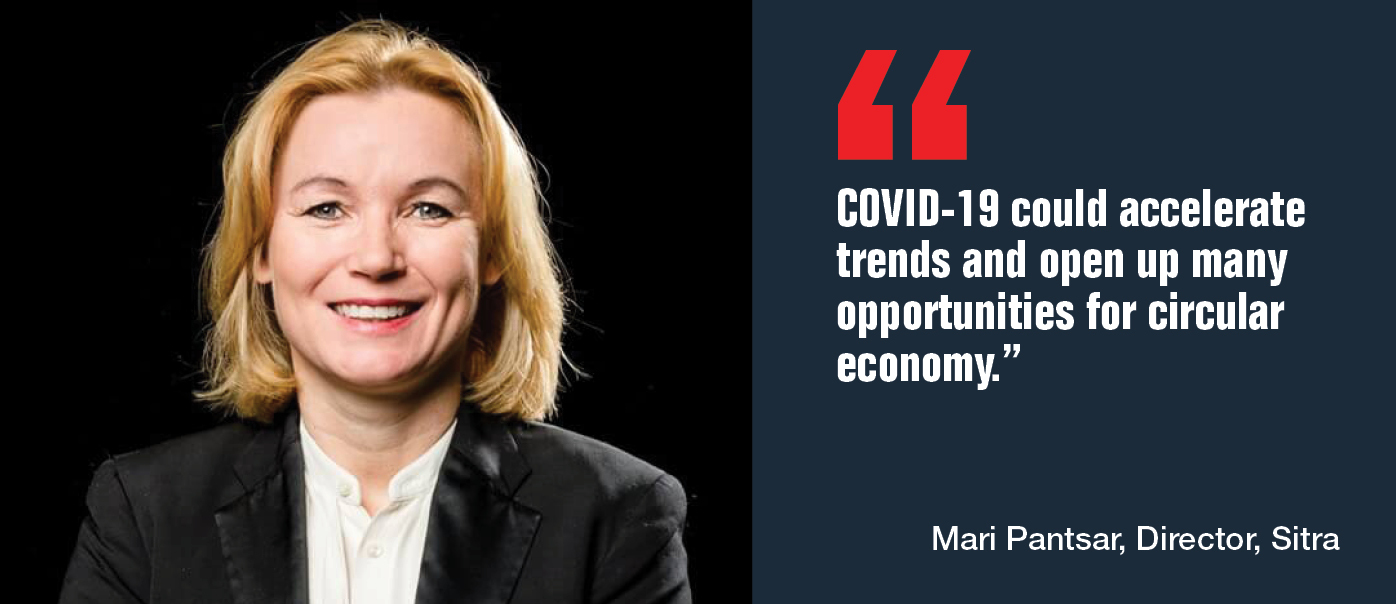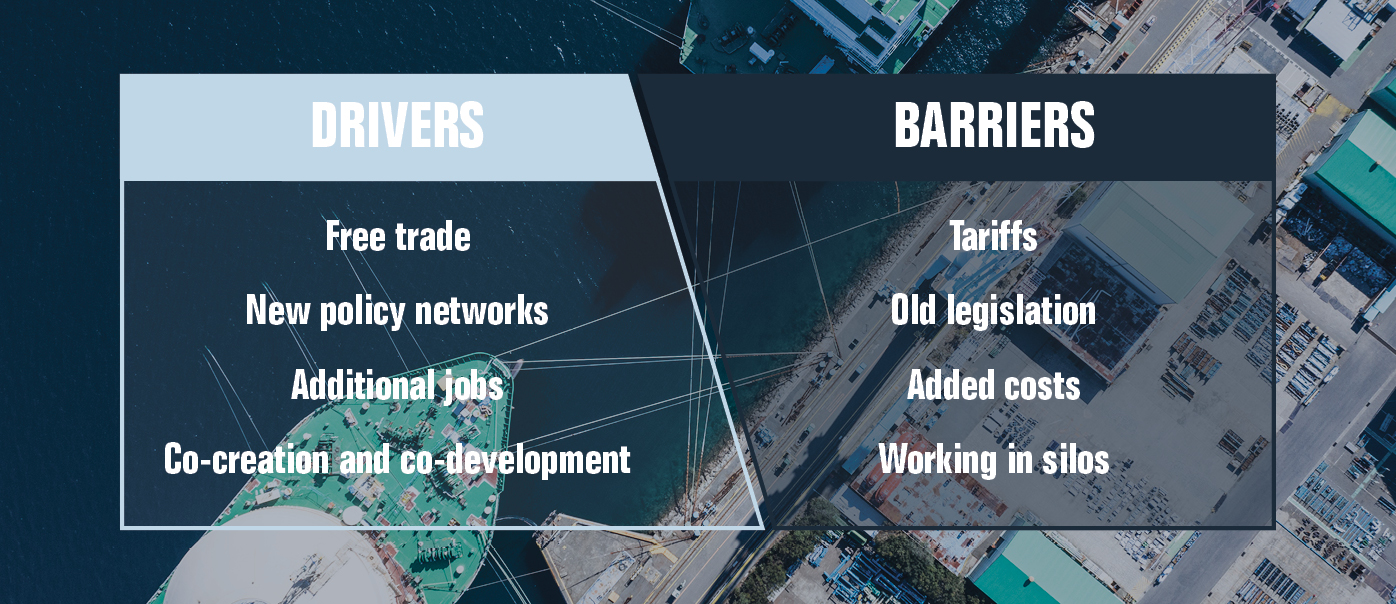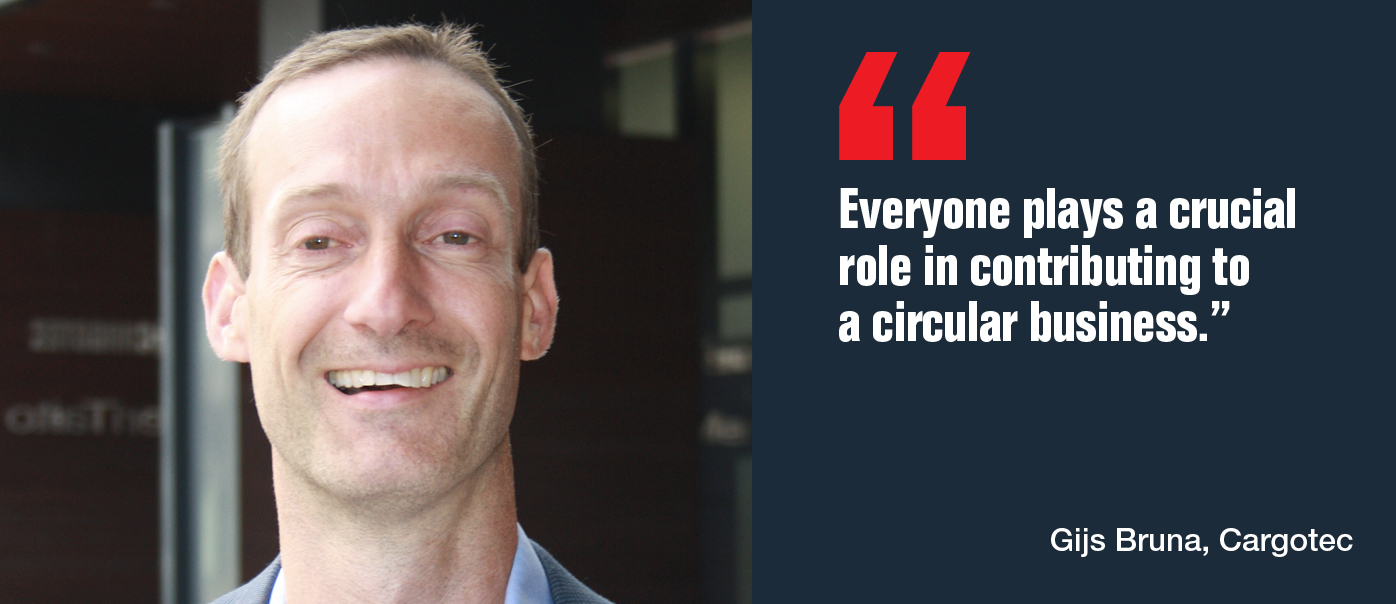Barriers and drivers of circular economy in global logistics
02.09.2020
Adopting a circular business model presents both hurdles and opportunities, and sometimes it can be difficult to tell one from the other. What can logistics companies do to improve their prospects?
A circular economy is based on the principles of designing out waste and pollution, keeping
products and materials in use, and regenerating natural systems. So, what is holding the
global logistics industry back from adopting a circular business model and unlocking its
immense potential?
According to Mari Pantsar, Director of The Finnish Innovation Fund Sitra, there are both
barriers and opportunities, and sometimes it can be difficult to make out which one is which.
Pantsar steers strategy on carbon-neutral circular economy issues at the independent public
foundation, which operates directly under the supervision of the Finnish Parliament.

Supply chain disruption as an opportunity
“Inescapably, COVID-19 is now posing a challenge to all sectors, and we need to acknowledge
that there is still uncertainty in terms of what it will mean for the world economy. That also
goes for logistics, which has been directly affected by recent disruptions,” she says.
Pantsar points out that some experts suggest that the pandemic will trigger a shift towards
more regionalisation and less fragile supply chains. Others, on the other hand, reason that
those in economic distress may be pushed to cut costs more, making just-in-time supply
chains more prevalent.
Nonetheless, she mentions that globalisation had already started to transform before the
pandemic struck. More regional supply chains have become knowledge-intensive and less
dependent on outsourcing to low-income countries, among other signs.
“The role of services has also been increasing for a long time, so in a way we have already
been moving towards greater self-sufficiency. COVID-19 could accelerate these trends and
open up many opportunities for circular economy,” Pantsar shares.

Paradoxes to consider
“We are seeing more free-trade agreements than ever, but at the same time, we are also
seeing vocal proponents of tariffs at the other end of the spectrum,” she says. “This reality has
an impact on scaling up the circular economy.”
For Pantsar, another aspect that is both an opportunity and a barrier in a circular economy is
often more labour-intensive—additional jobs but added costs. “An assembly line requires less
labour than repurposing, repairing and upgrading existing products. The real problem here is
that labour is relatively more expensive than virgin resources and energy.”
Ways to overcome barriers
From Pantsar’s point of view, a significant barrier to the logistics industry’s adoption of a
circular economy has indeed been this faulty pricing balance. “Reverse logistics,
remanufacturing, reusable packaging, and optimisation of available space would all benefit if
there were more supportive price mechanisms in place,” she explains.
Second, she says that more collaboration is needed to deliver services, as some of the links are
still missing. This can only be achieved if actors work together.
Third, there is the legal framework to think about. “It takes time for legislation to cover new
business models. At the same time, the abundance of brilliant ideas presents many
opportunities. As these business models gain more and more traction, policy framework
begins to reflect this shift. This is a two-way process, of course,” she says.
Conceptual shift
“At Cargotec, circular economy is a conceptual shift built around a few simple principles,” says
Gijs Bruna, Senior Project Manager at Cargotec.
The first is design intent and involves the materials that comprise the company’s products. As
every component can be considered a raw material, identifying and documenting them in a
material bank is crucial.
“Recycling materials from multiple undocumented sources leads to quality degradation. The
main aspects of circular design require that materials be easily separable, repairable, reusable
and durable,” he adds. Such thoroughness is imperative given the long asset lifetimes of
Cargotec products, which range from ten years for a small loader crane to 30 years and more,
for instance, for a ship-to-shore crane.

Examples of circular supply chain initiatives
The next principle relates to diversity and modularity. Like Pantsar, Bruna says that COVID-19
has exposed the limitations of the global supply chain, with material and component
shortages causing disruptions.
“Improving supply chain resilience is important for small and large corporations alike.
Turning to multiple suppliers instead of relying on single ones for critical components and
extra inventory can be expensive. Building design flexibility through modularity with
interchangeable parts can mitigate this, but requires time to develop,” he explains.
Product portfolio diversification is another way for companies to becomes less dependent on
single income sources. Bruna offers some examples of diversification-related circular supply
chain initiatives at Cargotec. These include refurbishing and selling equipment from a trade-
in, and refurbishing returned faulty parts, such as cylinders, which can then be used as new
spare parts for another case. “Kalmar also provides some of the equipment as short-term
rentals, which are typically returned from a lease agreement with asset life left.”
Forming a networked service organisation
The last principle relates to co-creation and co-development. “To switch gears towards a
circular business model, forming a service ecosystem is essential, both within an organisation
and with other service providers complementing its offering,” Bruna notes.
In addition, Bruna maintains that partnering with key component and technology suppliers
enables the flexibility needed to scale operations up or down more easily. “Moreover, by
collaborating with groups that offer specific knowledge, a company gains access to
technologies that would have otherwise been too complex to become central to the business.”
Changes to enable circularity
From his perspective, automation, digitalisation and electrification can empower Cargotec’s
efforts towards circularity. Automation and digitalisation enable the use of renewable energy
and allow the company to keep track of equipment and the materials used in them.
Electrification, meanwhile, can lead to a reduced need for spare parts, but also to increased
maintenance complexity.
“All in all, these offer Cargotec opportunities to expand our service offering beyond spare
parts and maintenance services. For instance, new services like equipment energy
management and process consultancy can be developed,” he says. “This not only calls for a
shift in our portfolio from products to services, and from single transaction-based selling to
relationship management. It also requires changes at all levels within the organisation, within
our supply chain and with our customers.”
For Cargotec to continue to stride towards circularity, Bruna believes that a revision in culture
and capabilities is needed. “A starting point is awareness, and conversations around the topic
are the beginning. Each person in every department can join the movement. Everyone plays a
crucial role in contributing to a circular business.”
